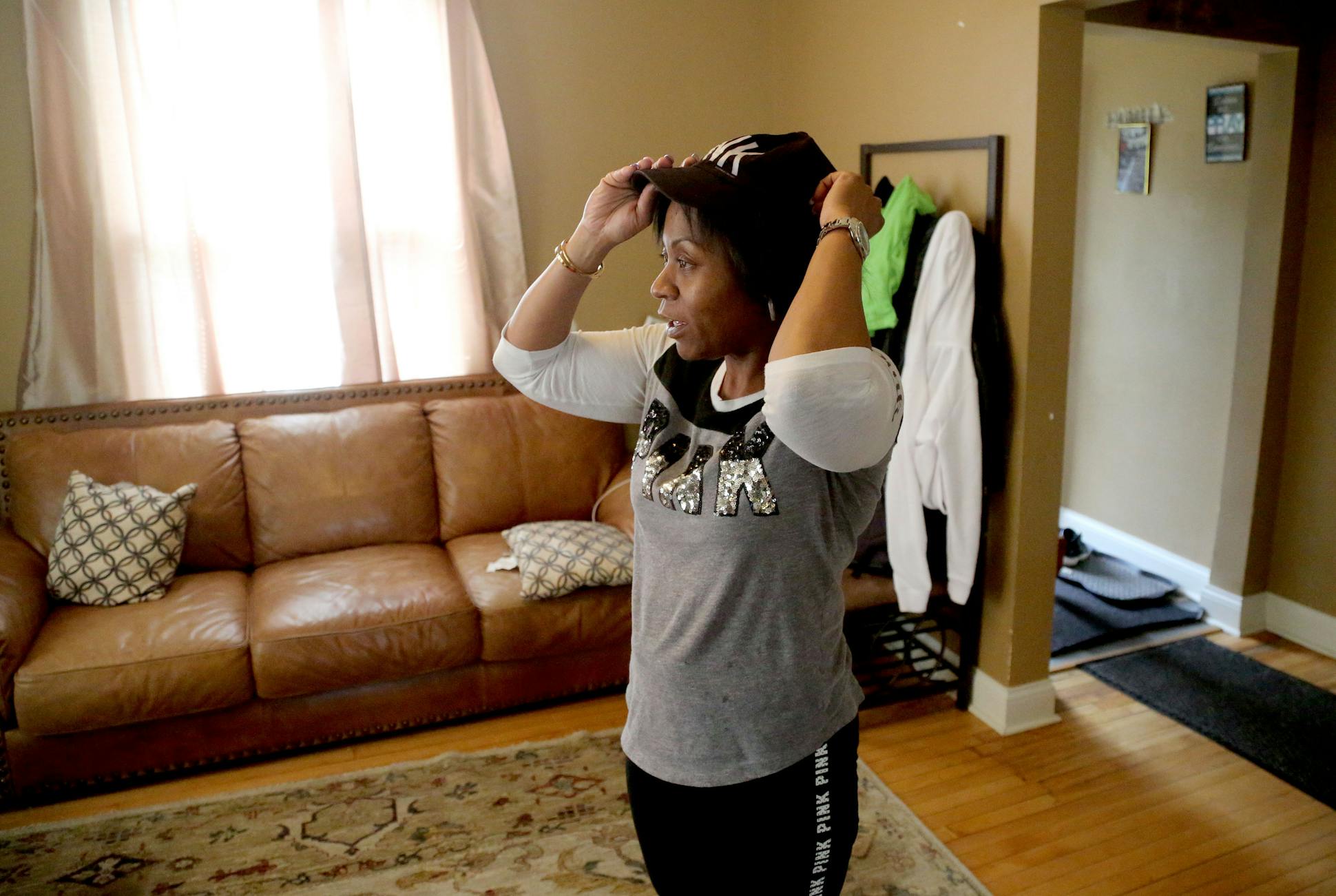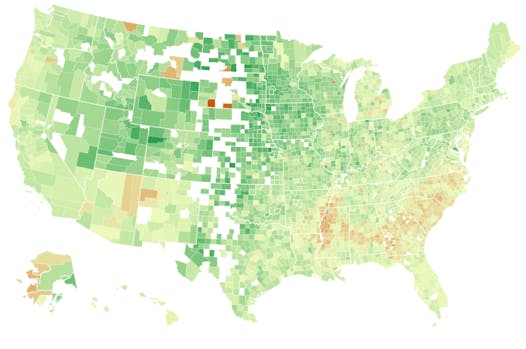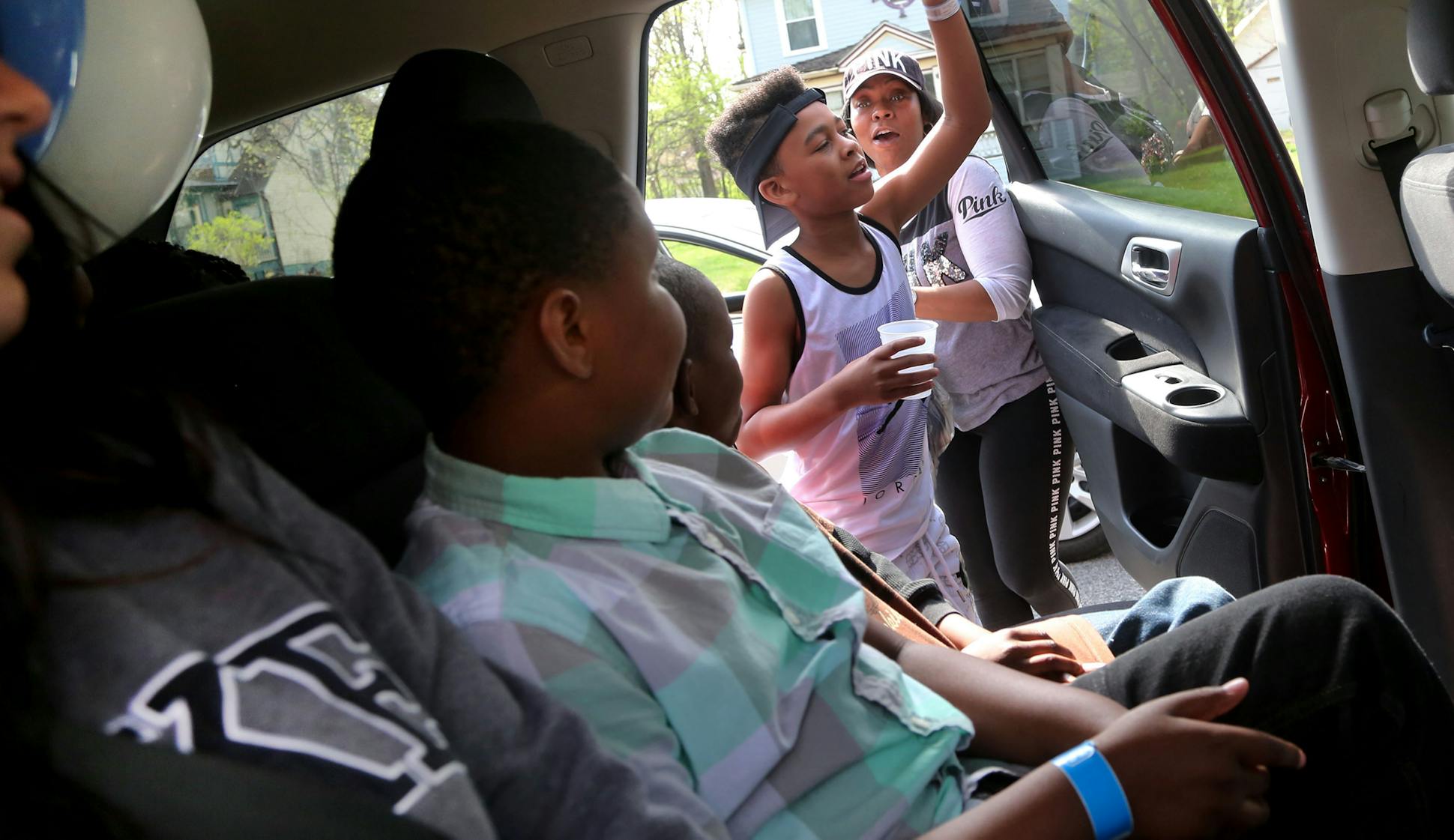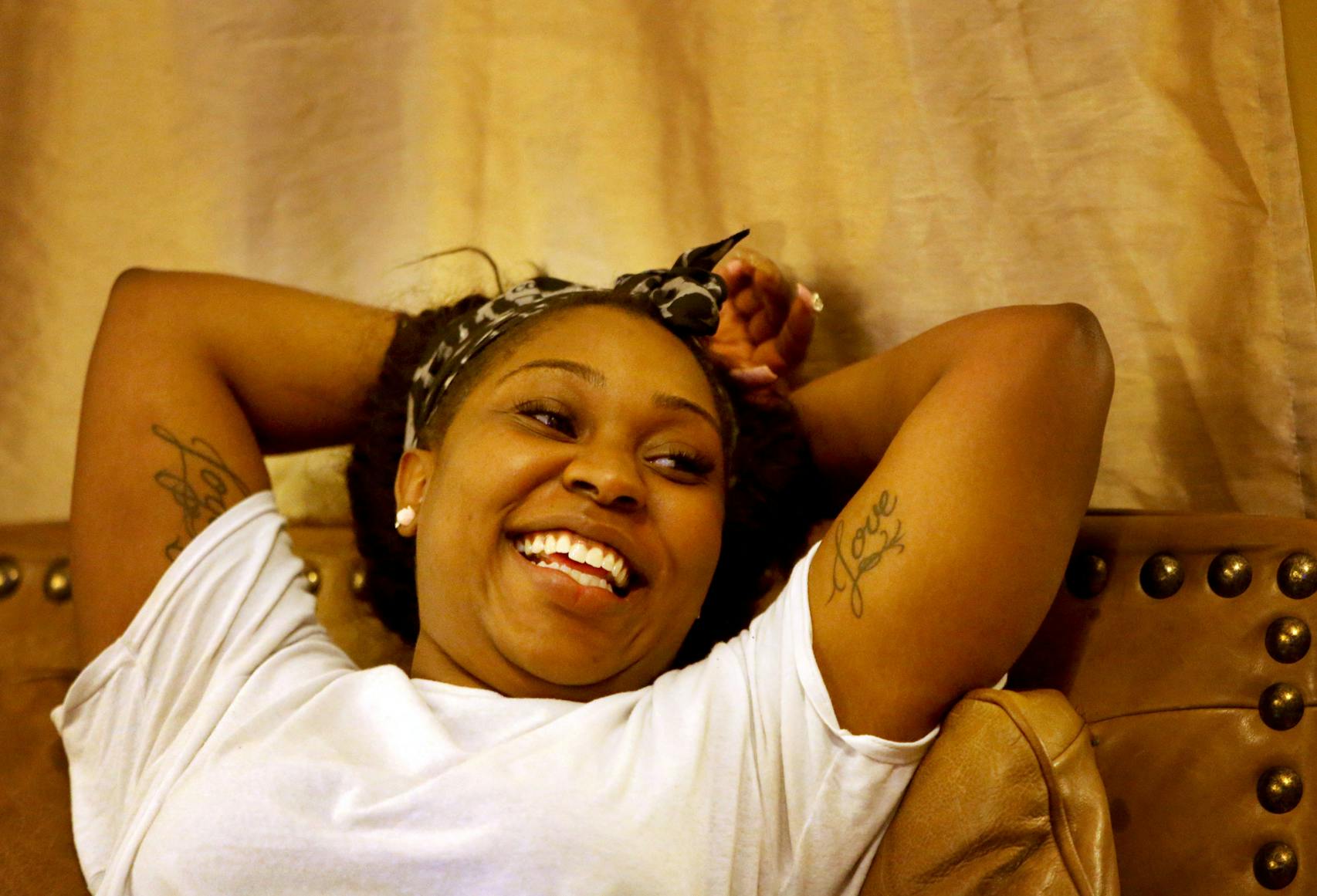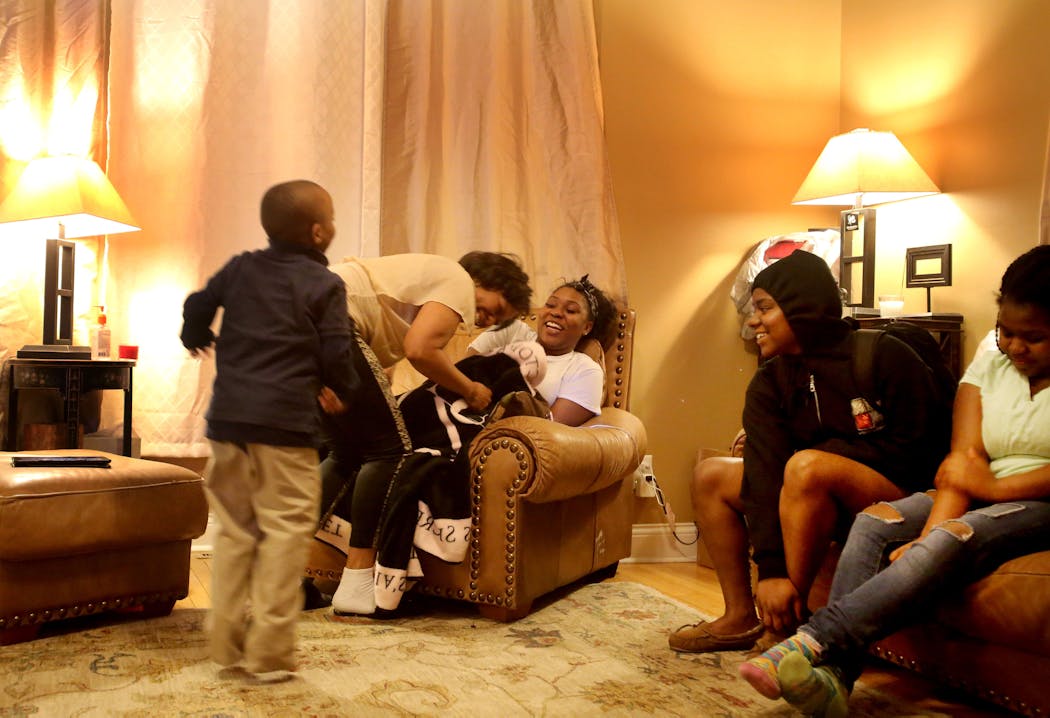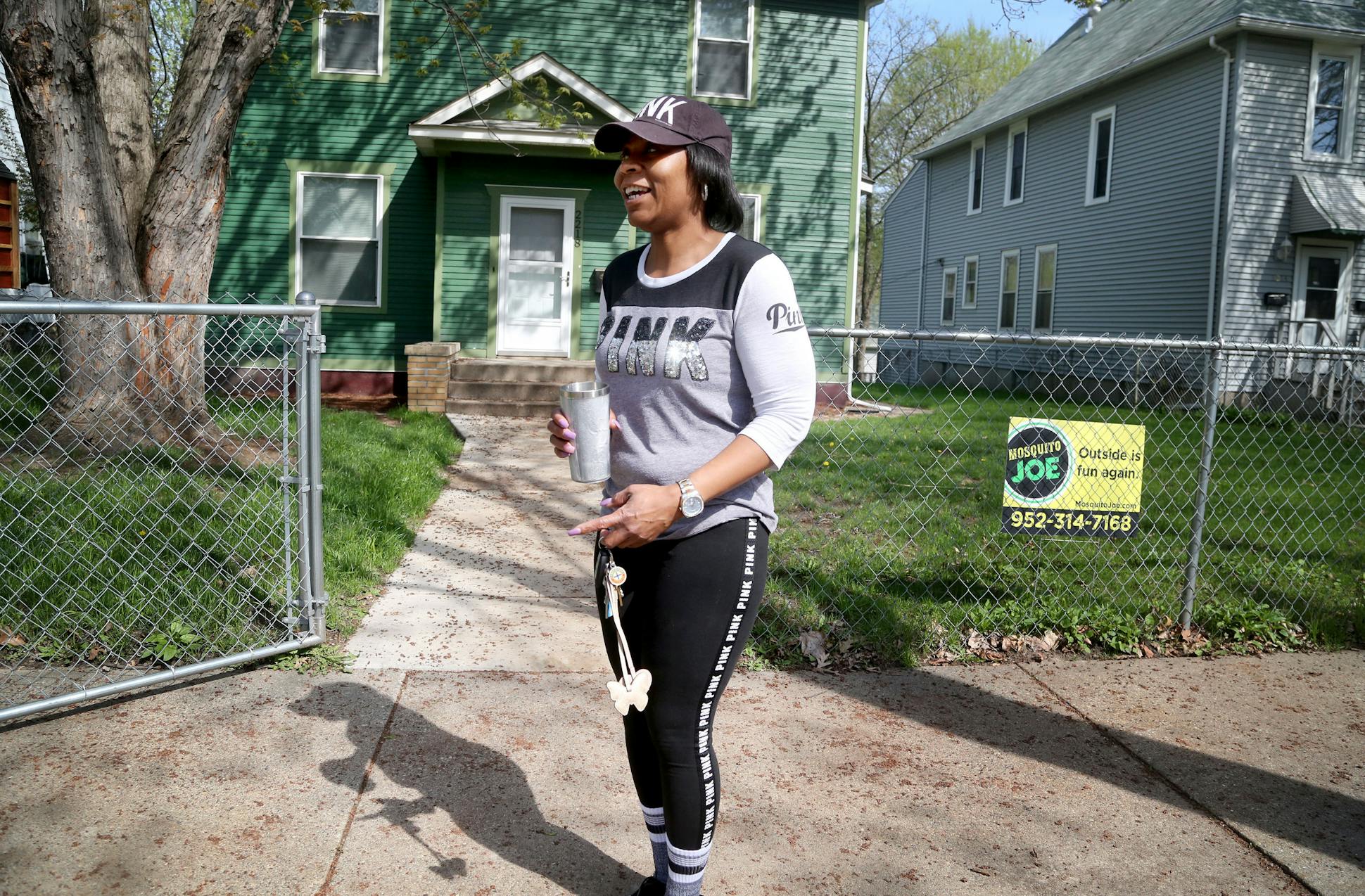Story by Adam Belz • Photography by David Joles • Graphics by Michael Grant and Jeff Hargarten • Star TribuneDec. 28, 2016 — 12:00AM
Ethrophic Burnett escaped the South Side of Chicago, moved to Minneapolis "to have a life for my kids" — and wound up in a social experiment.
In the late 1990s, when the oldest of her children were just in elementary school, her family was one of hundreds that was moved to the Twin Cities suburbs as the result of a federal fair housing lawsuit. Her children thrived, she said. They developed new ambitions that otherwise might have seemed distant.
Then, three years ago, as her oldest daughter entered college, Burnett lost eligibility for the home she was living in and moved the family back to the poorest area of Minneapolis.
"I prayed about it, and I didn't want it. I was like, 'Nope, nope, nope,' " she said. "But my hand was being forced."
Across the United States, the likelihood that poor children will eventually rise into the middle class or beyond depends heavily on where they live. Suburbs and small towns remain beacons of opportunity for the poor, places where their poor children are more likely to grow up to earn more money than their parents.
The hardest places in the United States to overcome poverty are the nation's cities, where rich and poor live in separate worlds and where most poor and most black children live.
In Minnesota, the divide is stark.
A massive, ongoing study of income data by economists at Harvard and the University of California, Berkeley, has found that many of the places with the greatest so-called "income mobility" in the United States, where poor children grow up to be more affluent than their parents were, are in rural Minnesota and nearby states. Poor children in Minneapolis and St. Paul tend to stay poor, just as in most other big cities across the country.
Pressure is building to change that. Gov. Mark Dayton has prioritized a plan to reduce racial inequity and create more opportunities for low-income people. The U.S. Supreme Court faulted Dallas last year for not steering enough affordable housing into affluent suburbs, and a similar legal challenge is underway in Minnesota.
But despite decades of effort to foster the equal opportunity at the core of the American dream, there remains a sharp debate about the best approach. Is the solution to make it easier for poor people to move to the suburbs? Can the barriers to success in the nation's inner cities be eliminated?
Beyond the broad questions, there are practical realities. Poor people may not want to move to the suburbs, and suburbs sometimes don't want them. There's only so much land available in affluent neighborhoods to build more housing of any type, and developers tend to pitch upscale projects.
"We have concentrations of poverty and we have concentrations of joblessness, and we've got concentrations of crime and we've got underperforming schools, and we sort of all know where that is," said Ed Goetz, director of the Center for Urban and Regional Affairs at the University of Minnesota. "And so the question then is what is the best way to address those problems."
Last year, decisions by the Supreme Court and federal housing authorities swung the pendulum in favor of more aggressive housing integration. But Goetz himself is ambivalent about that as the sole solution, and the best way to bring economic opportunity to everyone in the United States remains an open, contested question.
Burnett and her children have lived the debate.
From Chicago to Chaska
Burnett grew up in the Robert Taylor Homes, a big housing project on the South Side of Chicago that was also home to Kirby Puckett, the Minnesota Twins Hall of Famer.
In the spring of 1997, at age 24, she decided she had to get away. Scared, carrying a 3-year-old and pregnant with her second child, she boarded a Greyhound bus for Minnesota. As she rode away she remembers the driver praying, and saying God had a new beginning in store. "I knew that was for me," Burnett said.
She landed in south Minneapolis, got a job at a grocery on Lake Street and an apartment in Whittier. She applied for public housing, hoping to live along Olson Hwy. The timing was fateful. The building was slated for demolition as part of the settlement of Hollman vs. Cisneros, a lawsuit alleging that public housing in Minneapolis perpetuated segregation by race and income. The lawsuit resulted in the relocation of 500 poor families, mostly from Minneapolis, to subsidized housing in the suburbs.
Burnett was offered a townhouse in Chaska, a historic town on the banks of the Minnesota River 20 miles from Minneapolis. She visited during a lunch break, warily, and discovered a big, beautiful apartment with three bedrooms on two levels and a balcony overlooking a fish pond.
She and her three young daughters — Jessica, Jhanae and Jamilla — moved there in 2000. TV cameras showed up. The Chicago Tribune sent a reporter to write a story highlighting Minnesota's progressive housing policies.
Explainer
djusting to suburbia
The transition wasn't easy. Burnett felt police hassled her on the commute to Minneapolis. Teachers said Jessica, who learned to talk in Chicago, didn't speak properly. When something went missing at school, Jessica's locker was among the first to be searched, her mother said. "One girl asked me if I was dirty because of my skin color," Jessica, now 22, recalls.
"It was fear on my part because here I am in an all-white neighborhood," Burnett said. "It was fear on their part because here this black woman comes with all her little kids. What's she trying to do?"
A community's welcome is crucial when a poor family moves to a wealthier town, and not guaranteed, said Tim Essenberg, an economics professor at Bethel University who rejects the idea that simply dropping the poor into rich neighborhoods will help them.
"If the area doesn't socially embrace you, and say 'We're going to become something different together,' it's not going to work," he said. "It's perfectly legal to discriminate in the social realm."
Burnett gradually built a network. She threw barbecues in her backyard, babysat neighbors' kids, showed up at school and checked in with her children's teachers.
Her daughters made white and Latino friends and got on track for college. They went camping, traveled north to friends' cabins, rode horses, learned archery, drove four-wheelers, chased chickens, swam in lakes and visited the Boundary Waters.
"That's why I left Chicago, because I wanted my kids to be kids. I want them to play. I want them to go run, ride their bikes, not to have to worry about gunfire. I wanted them to know what it means to have friends of different races," Burnett said. "I wanted them to have an education. I wanted them to be around kids who talk about going to college."
national debate
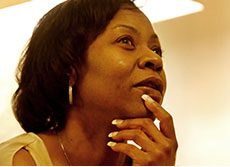
Ethrophic Burnett, 44
Location: Minneapolis
Job: Community engagement specialist, Urban Homeworks
Family: Single mother with six children
Housing: Owns a home in north Minneapolis
Hometown: Chicago
On the rationale for moving to Chaska in 2000:
Efforts to intermix the rich and poor are hotly debated in the Twin Cities and around the country.
Last summer, the U.S. Supreme Court ruled that the Department of Housing and Urban Development broke the law in Dallas by not pushing enough affordable housing into the suburbs while funding too much of it in already poor, mostly nonwhite neighborhoods.
In the Twin Cities, Richfield, Brooklyn Center and Brooklyn Park have joined a tiny local nonprofit, the Metropolitan Interfaith Council on Affordable Housing (MICAH), in a complaint against the Metropolitan Council, the regional housing authority, that is similar to the lawsuit in Dallas.
Myron Orfield, a University of Minnesota law professor and architect of the local complaint, has demanded more aggressive integration and argued that clustering subsidized apartments in the center cities and inner-ring suburbs denies many children a shot at a better life. "It's destroyed thousands and thousands of people's lives," Orfield said. "It's gearing them off toward prison."
The Met Council says it can encourage suburbs to build more affordable housing, but can't compel them. It has also rolled out a modest program to help poor families who want to move to wealthier neighborhoods.
"We encourage and support communities throughout the region to invest in and support affordable housing, but ultimately each community makes that decision on its own," said Adam Duininck, chairman of the Met Council, in a statement.
Federal authorities have not acted on the complaint yet, and Orfield's prescriptions are vigorously opposed by community leaders and activists who think calls for housing integration obscure bigger problems: a lack of investment in poor neighborhoods and a criminal justice system that discriminates against blacks.
Shannon Jones, a third-generation North Sider who works at a housing nonprofit, said the move to push black people to the suburbs is an insult.
"Why don't you move more rich people to the city?" she said. "You're saying my kids will be better off if they're around some of you good people? That's loaded."
LOURISHING: Ethrophic Burnett's oldest daughter Jessica, 22, recalled the family's experience living in the suburbs. "One girl asked me if I was dirty because of my skin color," she said. But eventually, the family flourished. At right, Burnett played with her children Jeremiah, Jessica, Jamilla and Aaliyah.Community resistance
Most suburbs are not clamoring for affordable housing.
Carver, a town just southwest of Chaska, was thrown into uproar last year as the City Council tried to approve construction of 68 affordable apartments on land across the road from a bunch of big houses, next to the site of a new elementary school.
Calls and e-mails flooded city hall, warning of a rise in crime, a decline in home values and a strain on the school system. About 350 people packed a raucous public meeting that Mayor Mike Webb threatened to shut down if people didn't hush.
The audience kept quiet until Farhio Khalif, a Somali immigrant and board member of MICAH who doesn't live in Carver, came to the microphone. "What are you afraid of? Immigrant people, people from the other side of the world, coming in here, building homes in your neighborhoods?" she said.
A chorus of boos rose in the crowd.
"Let her speak!" a woman snapped over the din.
"Open up your hearts," Khalif said. "This can be you. Let's move forward."
The apartments won approval. But such projects are rare. Funding is scarce, towns are resistant, and public officials who support them face a storm of criticism.
"None of it would be built if it were up to most councils," Webb said.
hanging perspectives
Burnett, who now has six children, said living in Chaska made them more "well-rounded." But her relatives in Chicago said she and the children changed, and she acknowledged that it was true. "I went from being fearful in the suburbs, to being used to being out there in the suburbs, to being fearful of the city," she said.
After Jessica graduated from Chaska High School, she decided to go to Bethune Cookman University, a historically black college in Daytona Beach, Fla. "I wanted to be more around black people that had the same goals and dreams that I had," Jessica said. "That was news to me to realize that there were more of us out there, too."
Her climb upward affected the family in Minnesota, revealing the pitfalls that litter the path to success.
When Jessica rented an off-campus apartment in 2013, Ethrophic Burnett received a letter saying the family no longer qualified for public housing help. Burnett and her younger children by then were living in a larger home in Savage. They had 14 days to choose between Waconia or Prior Lake. She didn't want to move to either place, and couldn't find a rental that she could afford in Chaska or Savage.
One option was to buy a house, which she could do with the help of Urban Homeworks — but only in north Minneapolis. Burnett was reluctant, but said in time, however, "I felt like I heard God saying, 'All those things you learned in Chaska, I had to put you out there to strip you down and build you up. And now I'm going to put you back in the city to empower someone else.' "
Her daughters didn't feel the same way, and for them the return to Minneapolis was as difficult as the move to Chaska had been. They were accustomed to quiet, regimented weekdays, with evenings devoted to family dinner and homework. Now visitors dropped in more often, and there were resentments and arguments at school.
The girls had beaten the stereotypes in Chaska, but were adopting negative views of their black peers. "I came back here and I'm just like, no wonder they say that," said Jamilla, who graduated from high school last spring. "Look how you act. You act just how they say you act."
Jessica said she believes that, had she grown up in Minneapolis, there's a good chance she would already be a mother.
"Kids do grow up different in the city than in the suburbs," she said. "It does rub off on you, and if you're not strong enough to withstand it, it will consume you."
She completed three years at Bethune Cookman studying forensics and criminal justice, hoping to become a coroner. She will go back for her final year if she can scrape together $24,000.
Obstacles to success
Money is a constant worry for the family. Jessica needs money for tuition and housing to finish her senior year, and she already owes $50,000 in student loans.
Jahnae is studying at Minneapolis Community and Technical College, and Jamilla was accepted to Bethune Cookman but can't afford it. All three young women are working.
One night at her home a couple blocks north of Broadway Avenue, Burnett said she believed the obstacle to upward mobility for black children is that they don't benefit from the investments white children receive.
"For my kids, I can understand Myron Orfield, as far as saying that black children would do better, and they would have the opportunities and same exposure to things as their white counterparts — to some degree, yes," she said. "However, I think that if the resources were shared equally, there would be no need to send our children from north Minneapolis to Hopkins and Minnetonka and St. Louis Park."
The election of Donald Trump, whom Burnett sees as representative of racial division rather than healing, doesn't make her any more hopeful that black children will receive the investment they need. Even if poor minorities were to move to the suburbs en masse, "it's going to be white flight back to the city."
Jessica spoke up.
"But people feel like that you have to live in a different environment for kids to have a better education, and that's sad," Jessica said. "Why do you feel like there aren't the same teachers? You get what I'm saying? They're all teaching the same curriculum, supposedly, so why do you feel like another city has a better teacher?"
Her mother thought a few moments.
"There's a difference, I think, because in this environment, children are not expected to succeed. In white America, the third-tier suburbs that Myron Orfield is talking about, there is an expectation to succeed. It doesn't matter. You will succeed," Burnett said. "The expectation level here is different, and there shouldn't be a difference in the expectation level."
adam.belz@startribune.com 612-673-4405Finding opportunity
The ability to rise to another income level varies by region, but the Upper Midwest stands out as an exceptionally good place to raise a family.


